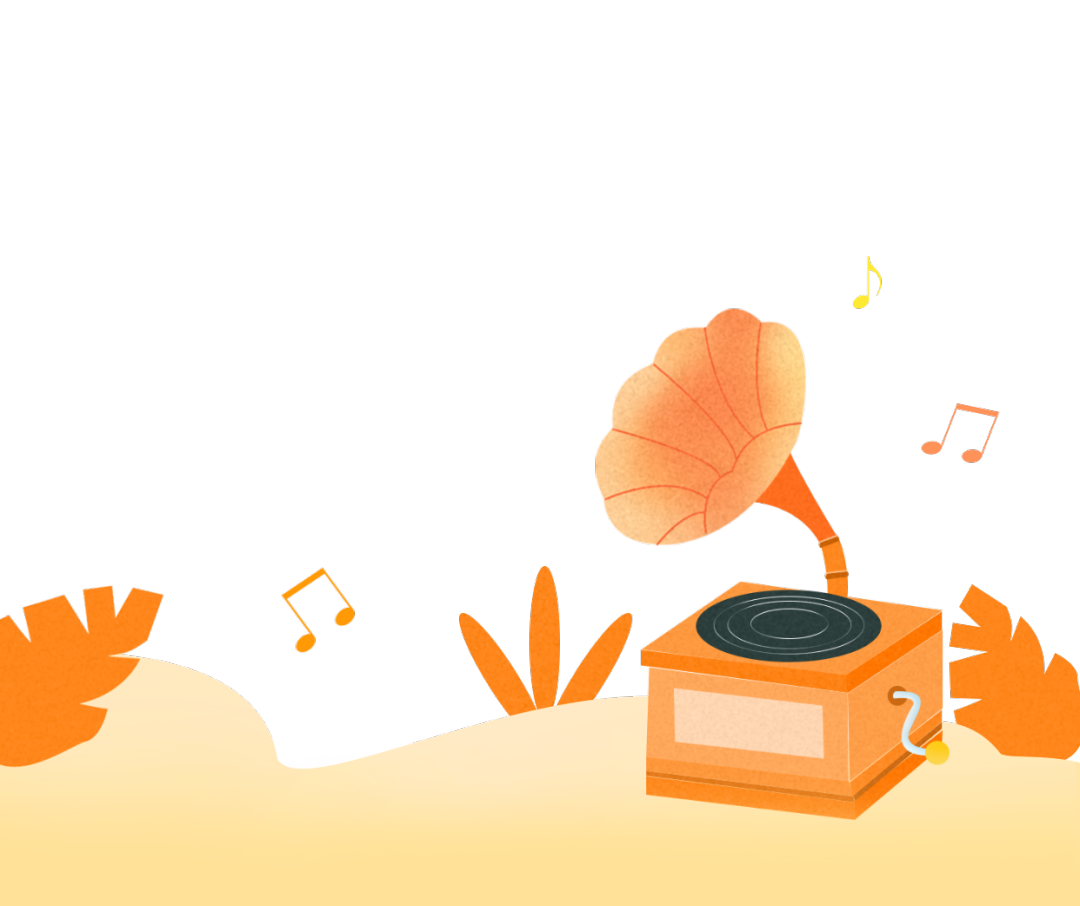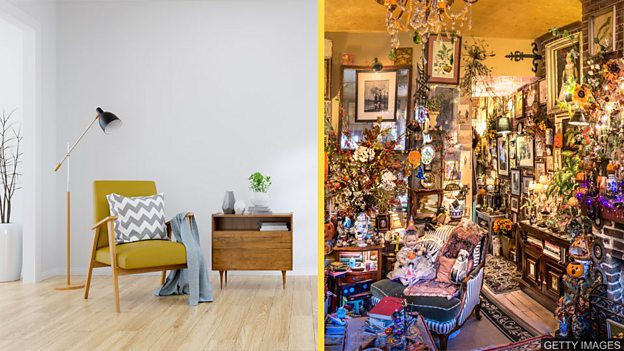精学妙用 | 极简与极繁:生活艺术的两极探索
2024年09月19日 12:04 陕西


生活艺术的两极探索
家装风格与个人品味相关,你喜欢简单素净还是奢繁大胆的装潢?本期节目中,小编将从室内装修的角度来谈谈“极简主义”和“极繁主义”之间的差异。
原文及译文

Some say you can tell a lot about a person by the way they decorate their home. We often find pleasure in the things we stick in our houses, be it trinkets we bought on holiday, film memorabilia or paintings to liven up walls. And when we head to others’ houses, we often see things we appreciate, but wouldn’t have in our own homes, because maybe they’re not quite to our taste. The point is, the way we decorate our homes is very personal. And while many of us have plenty of stuff, there are always people who go that little bit further. So, when it comes to minimalism and maximalism, which one appeals to you more?
有人说,我们可以从家装风格中了解到人们的很多信息。无论是度假时买的小饰品、电影纪念品,还是用来点缀墙壁的画作,家中摆放的各式物品往往会让我们感到愉悦。我们去别人家做客,也经常看到一些入眼的物品,但如果把这些东西放到自己家却可能行不通了,因为它们并不符合我们的品味。家装是一件极为私密的事情,这才是关键。就算许多人已经往家里塞了一堆东西,但总有人家里的东西会更多。那么你是更喜欢“极简主义”风格还是“极繁主义”风格呢?
stick:
词语解释:除作名词表示“棍”、“棒”或“枝条”(a stick shift; a joystick),还可用作动词表示“粘贴”、“粘住”(to become firmly attached in one position, and therefore difficult or impossible to move).
常见搭配:
stick out:伸出,突出,在困难中保持下去。
stick to:坚持,忠于,或信守。
stick together:粘在一起,或团结一致。
stick up:举起,竖立,或抢劫(俚语)。
派生词:
sticky表示“粘性的,棘手的,困难的”。
例句:I don’t think I can stick this job much longer.
我想我再也忍受不了这份工作了。
trinkets:
词语解释:“小饰品”,“小玩意”,通常指小巧、不特别贵重的装饰品,如小挂件、钥匙扣或小雕像等 (a small decoration that is not very valuable, for example a small piece of jewelry).
词义辨析:
trinkets v.s. jewelry:”trinket”通常指不那么昂贵或更小的装饰品,而”jewelry”可以涵盖更广泛的价值和类型(的珠宝),包括戒指、项链等。
同义词:knickknack、trifle等;
反义词:treasure、heirloom(传家宝)等。
例句:Her desk was adorned with various trinkets she had collected over the years.
她的书桌上装饰着她多年来收集的各种小玩意。
liven up:
词语解释:意思是使某事变得更加生动、有趣或充满活力。
相关短语:
brighten up:使某事变得更愉快或更光明。常用于形容改善情绪或环境氛围。
spice up:使某事更有趣、更刺激或更具有吸引力。常用于描述增添趣味性。
add zest to:为某事增加活力或热情,但更强调热情和活力。
bring to life:使某物变得生动或真实,使抽象或静态的事物变得生动有趣。
例句:The new decorations have livened up the room.
新装饰增加了房间的活力。
to one’s taste:
词语解释:意思是符合某人的口味或偏好。这个短语可以用来描述食物、饮料、服装、艺术、音乐等多种事物。
相关短语:
to one’s liking:与to one’s taste相似,也表示符合某人的喜好。
to one’s mind:表示符合某人的想法或观点。
to one’s satisfaction:表示使某人满意。
例句:This type of music is not to everyone’s taste, but I find it quite enjoyable.
这类音乐不一定适合每个人的口味,但我觉得它非常悦耳。
minimalism:
词语解释:指代艺术和设计中的极简主义风格,还可以用来描述一种生活哲学,即通过减少物质拥有量来追求精神上的满足和清晰。
相关短语:
less is more: 极简主义的核心原则,强调通过减少来增强设计或生活的质量。
maximalism:
极繁主义,与极简主义相对,强调“更多即是更多”(More is more)的理念。
Minimalism was an art movement that started in the 1950s. Its basic principles are derived from a concept of ‘less is more’ – reducing things back to their most basic. Some people took that art style and used it as a way of living. Ideas of vast open spaces with an organised and functional structure may spring to mind. They are usually decorated in simple pastel colours, with many minimalists opting for duotone, often just black and white. For some, especially maximalists, it may seem sparse and a bit bland to live without many things – even boring or depressing. However, living in this way is seen by many as more practical.
极简主义艺术运动始于20世纪50年代,其基本原则是“少即是多”(less is more),即将事物简化到最简。有些人则将极简主义奉为生活圭臬。提到极简主义,我们可能会联想到广阔开放的空间,整齐有序的实用性结构。极简主义的装饰通常以简单的淡色调为主,但也不少人喜欢双色调装饰风格,通常以黑白两色为主。极简主义者会摒弃繁多的物品,这种生活在极繁主义者眼里或许非常朴素乏味,甚至是既压抑无聊。许多人却认为极简的生活方式更加实用。
functional:
词语解释:通常用来描述某物或某事具有实际用途、功能性或实用性 (practical and useful; with little or no decoration)。
在设计领域,“functional design”强调的是设计的实用性和用户的实际需求;在语言学中,“functional language”指的是在特定情境下用于完成特定交际功能的语言表达。
例句:Just a few extra steps can get Rational Functional Tester working on the Linux operating system for testing Web-based applications.
只需要额外的一点步骤,就可以让Rational Functional Tester在 Linux操作系统上运行,用来测试基于 Web 的程序。
sparse:
词语解释:表示某物或某事分布不密集、稀少或稀疏。在不同的语境中,它可以用来描述人口、头发、植物覆盖、数据等 (only present in small amounts or numbers and often spread over a large area)。
相关短语:
sparse matrix:稀疏矩阵,在数学和计算机科学中,稀疏矩阵是指非零元素相对较少的矩阵,这在存储和计算上可以带来效率上的优势。
sparse population:稀疏人口,指的是人口分布不密集的地区,居住点之间的距离较远。
sparse vegetation:稀疏植被,描述的是植物覆盖度低的地区,植物之间的空间较大。
例句:So that summer, my sparse straw hat, like the sun like a sieve, put my thoughts into the ground thin thick screen of light particles.
于是那个夏天,我稀疏的草帽像筛阳光一样,把我的心绪筛成地上细细密密的光粒。
Maximalism is the opposite of minimalism and started in the 1970s. It embraces the core ideals that ‘more is more’. While minimalism centres around the principle of decluttering, it’s easy to imagine that a maximalist home is overflowing with items – but that’s not the base idea. It’s more about filling the space – making the most of the area. Structured excess and bold colours combined with mixed patterns is what you will see in a home like this. For a minimalist, used to more simplistic designs, it could be overwhelming. But for those who embrace it, those things give a space personality. The way you have your home is up to you! But, if you opt for maximalism, you may need to prepare for a bit more dusting.
极繁主义运动则始于20世纪70年代,其理念与极简主义相悖,遵循着“多即是更多”(more is more)的核心原则。极简主义者专注于清理杂物,而极繁主义者则强调要充分利用空间,并填满空间。极繁主义风格的家结构繁复、颜色大胆、图案混杂。对于习惯了更加简洁的设计风格的极简主义者而言,极繁主义风格可能会显得太过炫目。但极繁主义者却认为屋中的物品可以为房子增添个性。家装风格其实因人而异,如果你选择了极繁主义,你可能要做好经常打扫屋子的准备。
overflowing:
词语解释:
描述某物或某事充满到溢出的状态(the present participle of overflow)。作为动词,表示溢出、充满或泛滥的动作。作为名词,可以指溢出的物质或现象。作为形容词,用来修饰名词,描述其充满或溢出的状态。
overflowing可以作为表语或定语使用,直接跟在系动词后面或修饰名词。
与不同的介词搭配,如overflowing with(充满),overflowing from(从…溢出)等。
例句:The river Tiber was no longer a foaming torrent overflowing the plains.
台伯河已不再是漫溢平原的泛起泡沫的急流。
在极简与极繁的美学对话中,我们不仅见证了两种风格的对比,更深刻理解了个人表达的多样性。无论是追求“少即是多”的宁静,还是拥抱“多即是更多”的活力,每个人都能在这两极之间找到属于自己的平衡点。生活这一幅画布,正等待着我们用极简的线条或极繁的色彩,去绘制独一无二的故事。
特别说明:本文仅供学习交流,如有不妥欢迎后台联系小编。
– END –

